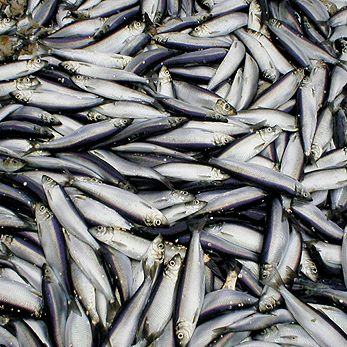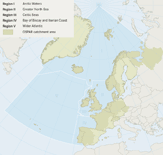Human use of living marine resources provides a wide range of goods and services of economic value to OSPAR countries. However, these uses exert pressure on the coastal and offshore environment which can have a wide range of impacts on marine ecosystems. Use of living marine resources covers the exploitation of marine species by man for food, feed, fertilizer or the production of other products of value or use, and includes activities such as fishing, mariculture and hunting. These activities are of high economic significance in some OSPAR countries and in some regions within countries. The QSR 2000 concluded that resolving questions on fisheries, which OSPAR recognises are most appropriately regulated through relevant international and regional agreements, was the most important issue concerned with human uses of the sea across all five OSPAR Regions.
OSPAR’s Biodiversity and Ecosystems Strategy addresses both the protection of species, habitats and ecosystem processes and the management of human uses of the sea. Chapter 10 reports on progress in protecting and conserving species and habitats. This chapter, and Chapter 9, report on OSPAR’s work on assessing the impacts of each human use of the sea, the action taken to reduce their impacts and the progress being made.
OSPAR Strategy objective for biodiversity and ecosystems
To protect and conserve the ecosystems and the biological diversity of the maritime area which are, or could be, affected as a result of human activities, and to restore, where practicable, marine areas which have been adversely affected.
The Strategy includes the following actions:
- Assessment of the impact of human activities on the marine environment.
- Drawing up of programmes and measures for controlling human activities that have an adverse impact on species and habitats that need to be protected and conserved, where this is necessary.
- Drawing the attention of fisheries management authorities to questions where OSPAR considers that action is desirable. For this purpose, OSPAR considers the management of fisheries to include management of marine mammals.


